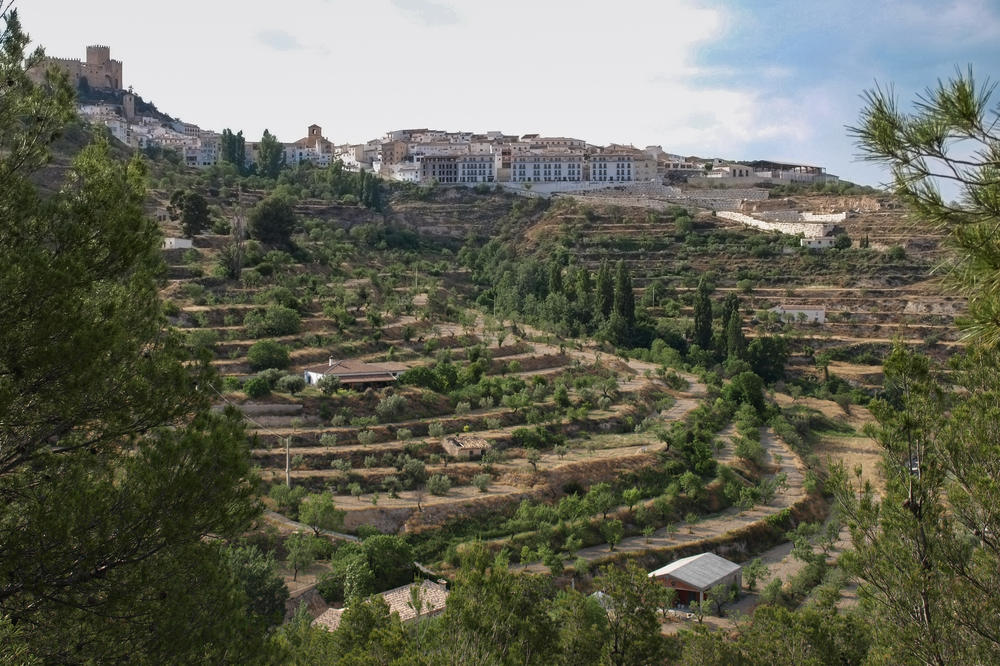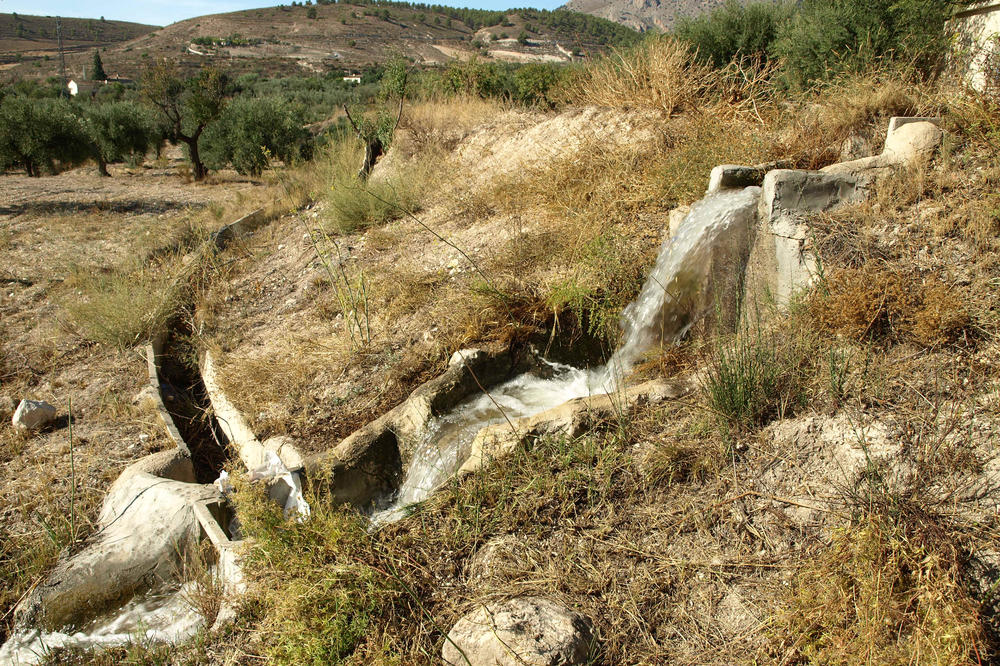Ancient Knowledge about Water – for Today and Tomorrow
Geographer and climate historian Jonas Berking of Freie Universität Berlin investigates water management in antiquity
Oct 31, 2018
The inhabitants of the Andalusian village of Vélez Blanco still irrigate the terraced agricultural areas using a canal system that was created more than 1000 years ago.
Image Credit: Jonas Berking
The great drought that hit Northern and Central Europe this summer not only led to crop failures in agriculture and record harvests for potato growers and winemakers, but it also had an unexpected side effect. It was a very effective reminder of the relevance of an area of research that would otherwise primarily be of interest to specialists in ancient history: the history of water management and irrigation, which is as old as the sedentariness of human beings and fundamental for human life as we have known it since the end of the last ice age.
The history of human water use is largely a history of scarcity – the great flood was the exception, and water scarcity the rule. The advanced civilizations in prehistory and early history developed in the truly water-poor regions of the “Fertile Crescent,” in which only human inventiveness created fertility. The same goes for antiquity: agriculture, urban development, and advanced civilizations did not come to life where water was abundant, but where people collected, dammed up, and made use of the little water available.
It is precisely this tradition of “water management” in antiquity that Jonas Berking, head of the junior research group in the “Topoi - The Formation and Transformation of Space and Knowledge in Ancient Civilizations” Cluster of Excellence is researching. In this interdisciplinary research collaboration, scholars from Freie Universität Berlin and Humboldt-Universität zu Berlin, together with colleagues from non-university research institutions, deal with the manifold relationships between space and knowledge in the civilizations of the Near East, the Mediterranean, and Central Asia from the Neolithic to the Middle Ages.
Berking is a physical geographer who focuses on water and climate history. In Topoi, he is researching ancient water management in cooperation with archaeologists, classicists, and scientific historians. “Water is a raw material and resource, it is subject to climate change as precipitation, and at the same time it is made socially accessible, organized, and distributed,” says Berking. “It is therefore an ideal way of combining historical climate research with archaeological and technical-historical research into water drawing and collection systems and the social, as well as legal institutions that legally regulate access to water.”
Using Egypt as an example, Jonas Berking illustrates how water management can fundamentally shape the development of an entire society. Here, with the introduction of the distribution system for the water drawn from the Nile, an entire “water bureaucracy” had developed for agriculture, which led to hierarchy, stratification, and one of the first states in society.
Antique water management was able to ensure year-round irrigation and drinking water in arid regions.
Berking illustrates how effective and sustainable antique water management could be by referring to the Jordanian rock city of Petra, which the geographer from Freie Universität Berlin visited together with colleagues from Humboldt-Universität zu Berlin in 2015. The city is located in the hot Jordanian desert valley Wadi Musa, on which rain falls only a few days of the year. But because the inhabitants had mastered the collection of even the smallest amount of rainfall in numerous canals, cleaning it in filter basins, and storing it in reservoirs, they were able to maintain wells and ponds and ensure irrigation and drinking water all year round.
Jonas Berking and the geographers Brigitta Schütt and Sarah Ißelhorst from Freie Universität Berlin have investigated an example of antique and medieval water management that has survived to this day in Andalusia, Spain. There, the village of Vélez Blanco is situated in one of the driest regions of Europe. Its inhabitants irrigate the terraced agricultural areas of the surrounding region using a canal system created more than 1,000 years ago. Not only the technical aids such as the canal network, the collecting basins, and the distribution mechanisms, but also the legal institutions for the distribution and allocation of the quantity of water according to the size of the cultivated areas, date back to the time of Islamic and Arab domination in Andalusia. These, in turn, were linked to Roman and Hellenistic knowledge of water management.
According to Berking, two legal water management systems in Andalusia, which date back to the Arab conquest, are still in use today: the Yemeni and Syrian systems. Water is either allocated equally to all or according to the size of the area under cultivation. The distribution of water as a jointly managed resource works so well and sustainably that it is still in use today.
The sustainability of traditional water management also makes it an attractive model for the present. Where knowledge passed down orally is forgotten, for example, because people are switching to modern electric groundwater pumps, there is an even greater risk of water shortage in the longer term. This scenario also awaits the centuries-old water management system in Vélez Blanco: due to the migration of young inhabitants to the cities, the village has lost 75 percent of its population. And because access to groundwater is cheaper and more efficient in the short term, the groundwater level threatens to decline in the long term.
A similar situation can also be observed in other arid regions: the availability of water by operating groundwater pumps means that it is used for unsustainable tourism projects, such as golf courses and swimming pools – and ultimately salinizes groundwater because of unsustainable extraction. The resulting threat of water shortages, together with climate change, harbors potential for conflict, for example in the Middle East, where some observers are already predicting future wars over water reserves.
This makes it all the more important to recall the small-scale approaches of antique water management. These small-scale approaches even have the potential, says Jonas Berking, to defuse large-scale water conflicts.



